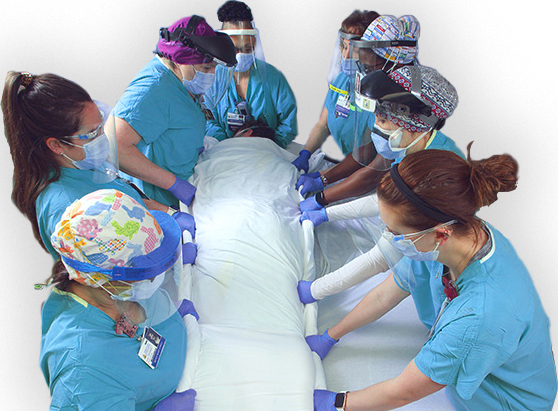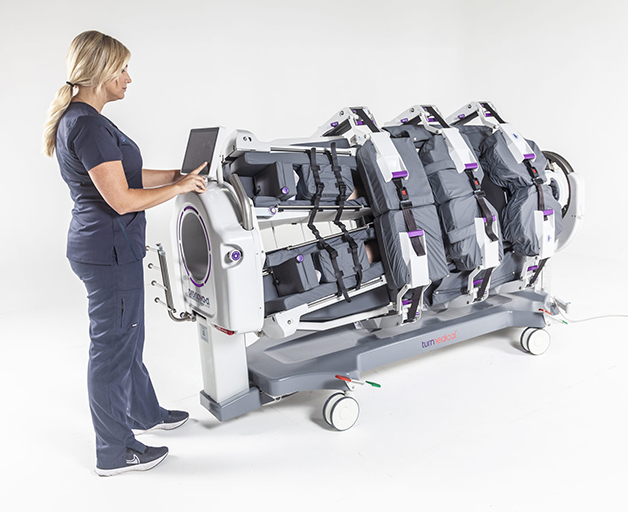
Manual prone positioning team
Staffing Difficulties for Prone Positioning
It is well established that safe nurse to patient ratios are strongly linked to positive patient outcomes. However, many recent articles1 have highlighted the growing shortage of skilled nurses, a serious problem amplified by the COVID-19 pandemic.
Intensive care clinicians now bear even more heavy responsibilities, from managing increasing numbers of critically ill patients while ensuring everyone’s protection with personal protective equipment, to manually turning multiple patients to the prone position every day, many times a day. Prone positioning has been established as a standard of care for COVID-19 patients2 and other patients with acute respiratory failure3; however, this procedure has many requirements for safe implementation.
Manual prone positioning requires 6–8 care team members4 based on patient weight and may require even more if multiple lines and tubes are involved. In addition, manually turning the patient from the supine to the prone position can take up to 30 minutes and longer if the proper staff isn’t available to assist with the maneuver. A recent analysis5 of COVID-19 patients across 24 ICU units in Italy found that 61% of ICU patients required prone positioning.
Prone positioning is an essential intervention to improve breathing for critically ill patients3, but without proper staffing and/or tools, prone positioning may not be implemented. Removing this critically important treatment can result in slower recovery and negative outcomes. Facilities with access to automated, safe patient-handling devices are more likely to implement prone positioning, especially for morbidly obese patients.

Automated prone positioning
Automated prone positioning provides immense benefits for clinicians and patients:
- Reduction in staffing requirements for position changes from supine to prone or prone to supine. The procedure of automated prone positioning can be performed with one clinician adjusting positions and monitoring invasive lines.
- Increased safety for patients and staff: Pronova-O2 has been designed with several safety features such as sensors ensuring proper placement, a Critical Line Management System to safely stow lines and tubing, and a weight capacity of up to 400 pounds to reduce lift injury risk for clinicians.
The Pronova-O2 Automated Prone Therapy System provides a safe and efficient method for positioning critically ill patients. INQUIRE NOW to a request a demo for your facility! For additional information on automated prone positioning, please visit turnmedical.com or call 1-855-275-8876.






